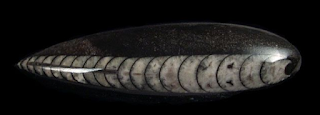4 Fun Facts You Wanted To Know About Orthoceras
Orthoceras are extinct sea mollusk
that once roamed millions of years ago. Like other fossilized remains of
creatures such as ammonites, shark teeth, and dinosaurs, orthoceras are highly
demanded and most popular fossil in the world. If you are interested in life
and habitual of this primitive shellfish, look for
orthoceras fossil for sale online. To go little down further, read the following fun facts about this amazing creature:
Bigger than
you expect
You have heard about the great shark
that is considered one of the biggest moving things in the ocean. Meanwhile,
orthoceras have various size ranges. According to the fossils discovered from
the sea coasts, the creatures the length of this shellfish can be anywhere
between 10 inches to 14 feet!
Intelligent
animal
Most people believe that the
extinction of animals was caused by stupidity. After all, no animals are
smarter than humans. Meanwhile, studies found out that orthoceras were fast
swimmers with a propelling force of jet mechanism insides their shells! They
can quickly slip away by squirting ink when a predator approached to charge an
attack.
They lived
everywhere
Fossil hunters usually find
fossilized orthoceras near any marine rock all over the continents. Morocco,
Scandinavia, the Alps, and Iowa are some of the regions you can dig out some
treasures of orthoceras.
Healing
power
Many therapists and spiritual healers
believe that orthoceras possess healing property than can increase your
lifespan. This fossil can reduce anxiety, stress, toxin, and balance your
emotional level. Some people also use orthoceras fossil slabs as home decors.
Reputed fossil dealers offer a large
selection of rare quality orthoceras that are polished to show the beauty of
their intricate internal growth patterns. You can purchase these items and
experience the vibe of orthoceras.


Comments
Post a Comment